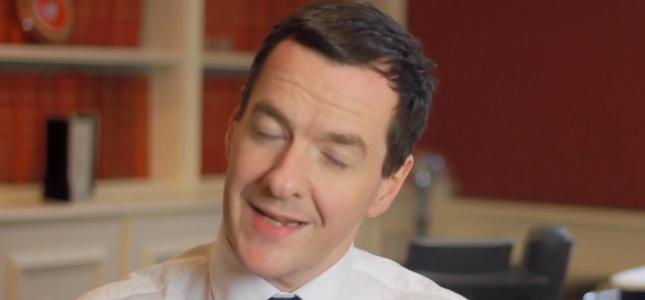
In short, the overarching takeaway is that there’s nothing all that earth shattering to take into account. The general gist is that George talked a good game about the state of the economy, put forward marginal improvements for savers and earners, froze fuel duty and scrapped planned increases in September, and creamed a little off the top of higher value pensions. For a pre-election budget it all felt a bit meh, and while there’s more detail below in terms of each of the changes that are afoot, the relevance of the announcement on your voting decision is probably going to be marginal with much more weight left to your personal perceptions of how well you think the economy and public spending is being managed.
There was no silver bullet or golden goose in the budget speech. Instead, George Osbourne tried to paint a picture of himself as the quiet and careful man working to steer the UK to economic stability. For some people, that will be enough to retain or sway the vote, however, for most the question around how well they feel things are going in terms of their own situation will be the deciding factor.
10 key Budget 2015 announcements:
1. Economic growth – UK economy grew by 2.6% in 2014 with similar growth projections planned for the coming years
2. Unemployment falls – While the unemployment rate remains at 5.7%, the number of unemployed people fell by 102,000 in the three months to January 2015.
3. Still borrowing big – Planned borrowing in 2014-15 is £90.2 billion, down from £97.5 billion in 2013-14. George Osbourne’s plans also in dropping down to £75.3bn in 2015-16, £39.4bn in 2016-17 and £12.8bn in 2017-18, which indicates that there’s more austerity to come.
4. Spending cuts – Spending cuts of £30bn needed by 2017-18 are planned with £13bn from government departments, £12bn in welfare savings and £5bn on stricter tax evasion and avoidance practices.
5. Not all borrowing reductions will come from spending cuts – Lower welfare bills, reduced interest charges and the sale of Northern Rock and Bradford & Bingley assets will add to the reduced borrowing. This will be boosted further by a change to the tax free savings level for pensions from £1.25m to £1m and a rise in tobacco duties by 2% above inflation.
6. Income tax thresholds to shift – the tax free income tax allowance will rise from £10,600 in 2015-16 to £10,800 in 2016-17 and again to £11,000 in 2017-18. The 40% higher income tax threshold will also increase from £42,385 in 2014-15 to £43,300 in 2017-18
7. Personal saving gets a little more love – tax free savings on the first £1,000 of interest for lower rate income tax payers and £500 for anyone on 40% income tax – A new help to buy scheme will allow first time buyers to get a special ISA in which the government will top up £50 for every £200 you put in to a maximum of £3,000 on £12,000 of savings – Savers will also be able to withdraw money from their ISA and then put it back in within the same year without it affecting the tax free allowance.
8. Living standards higher than May 2010? – Using the real household disposable income per capita measure from OBR (Office for Budget Responsibility) data living standards will be higher in 2015 than in 2010 – However, there are some critics of this metric, leaving a little shadow over the claim by George Osbourne as it includes incomes of universities, charities and trade unions.
9. Google tax confirmed – companies that apportion profits earned in the UK to overseas location will face additional tax levies.
10. Support for Scotland and Wales – Severn Bridge toll to fall to £5.40 from its current £6.50 in 2018 – £1bn tidal lagoon in Swansea Bay could be on its way thanks to consultation plans – Supplementary charge for North Sea oil producers to reduce from 30% to 20%, petroleum revenue tax to drop from 50% to 35% and new tax allowance planned to promote capital investment in the North Sea industry.


